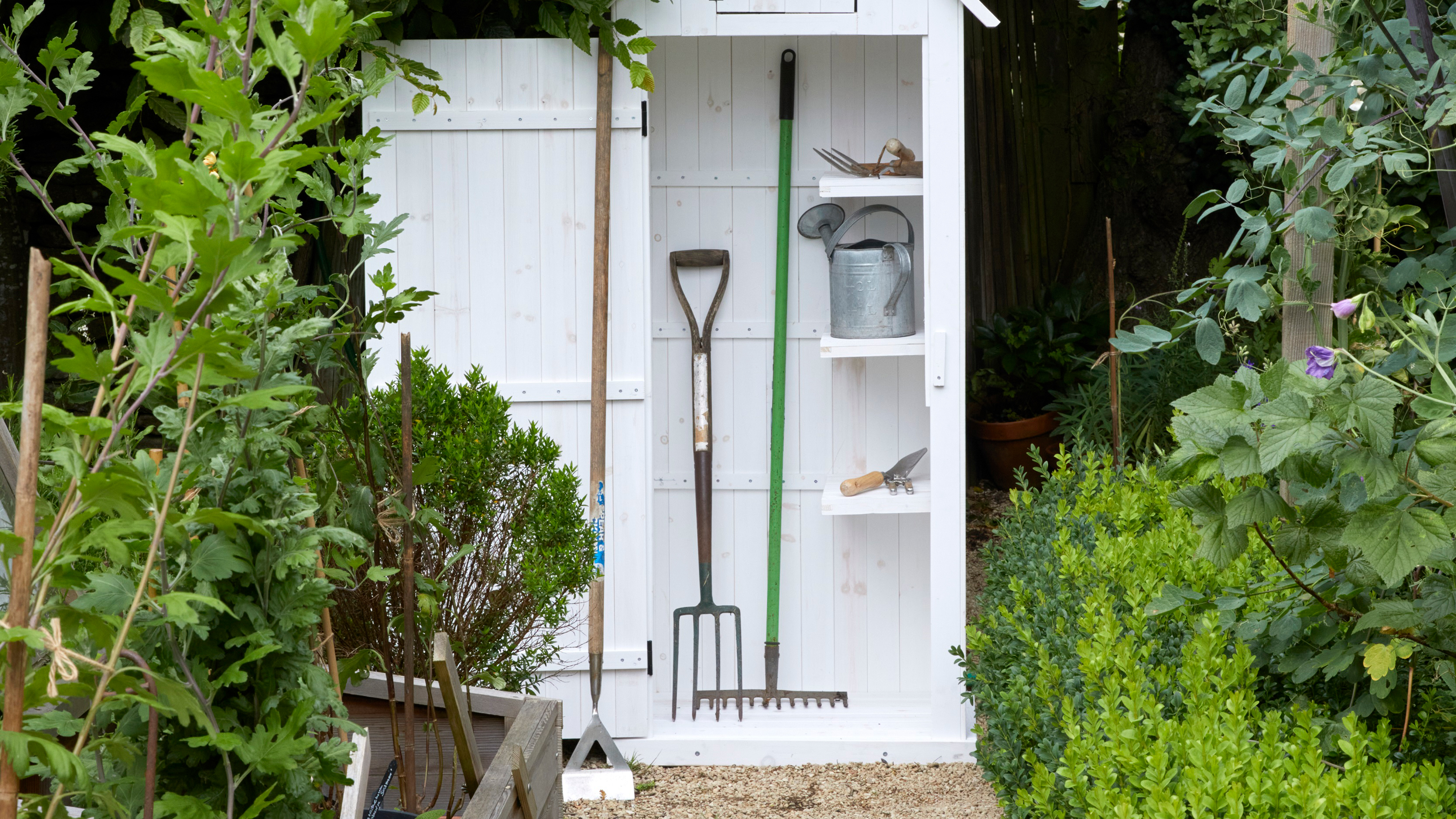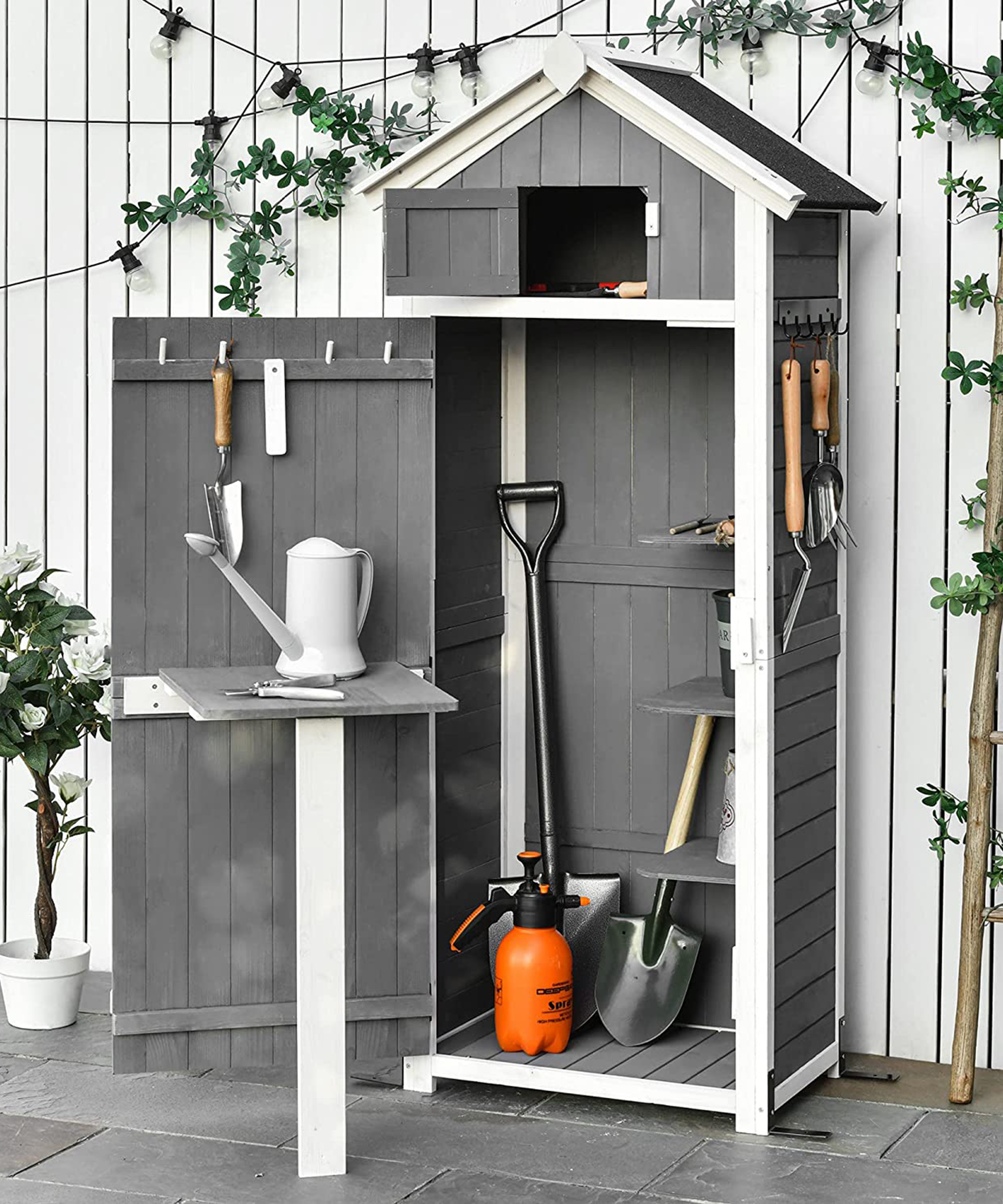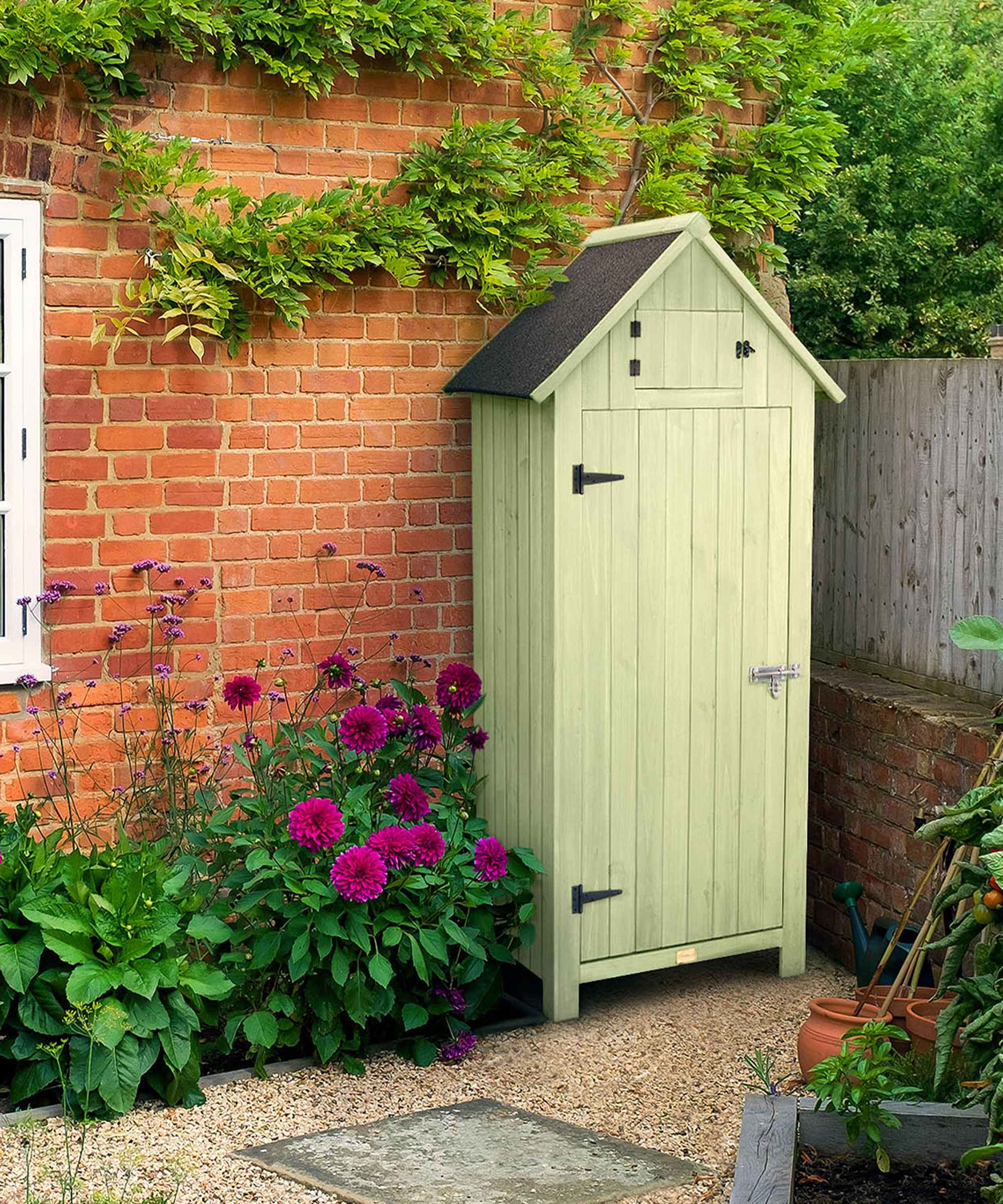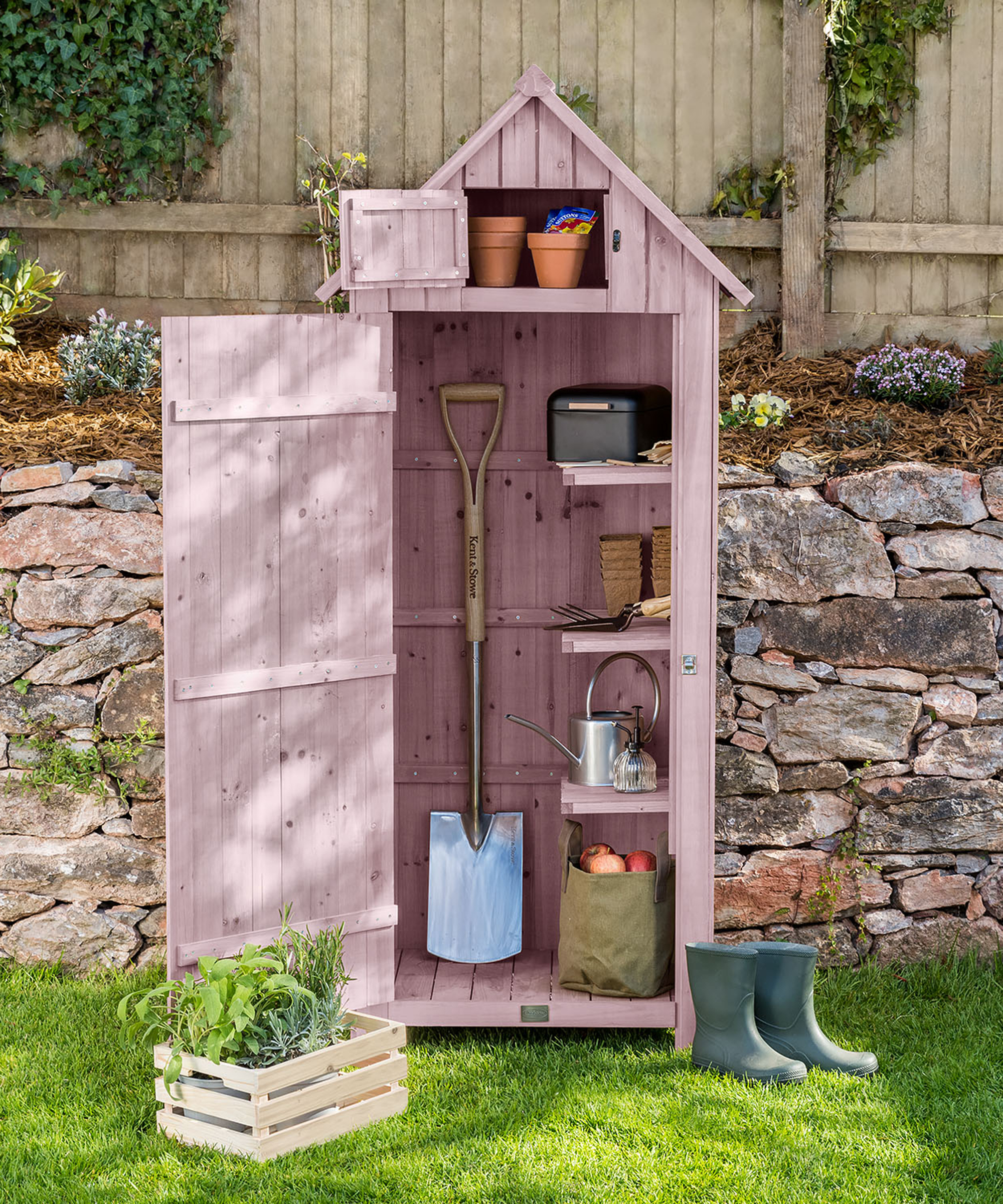Narrow sheds are soaring in popularity - experts reveal why they're the new garden essential
If you're struggling with storage in your backyard a narrow shed could be the perfect solution


If you’re looking for garden storage that fits neatly into a little nook on the patio, inner-city yard, or side passage, a narrow slimline shed is one of the best sheds you can buy.
Home and garden retailer Christow says demand for narrow sheds has reached an all-time high, with a 297 percent increase in narrow shed interest over the past month.
Narrow shed trend
Customers are looking to maximize every room in their home, allowing them extra living space, without compromising on practical, functional storage, says Nadia McCowan Hill, resident style advisor at online homes and gardens retailer Wayfair, which sells a smart grey and white wooden narrow shed.

'This is also true in the garden, to ensure there is plenty of room for relaxation and alfresco dining, whilst still having space to tidy away essential tools. A narrow garden shed will help to reclaim your outdoor space.'
When you’re looking for narrow shed ideas, opt for a design with built-in shelves and hooks so there will be plenty of space for pots, garden kneelers, and watering cans.
Tall, vertical storage won’t take up too much floor space, but still gives ample room for longer tools. Easily fitting snugly against a fence or exterior wall, some designs come with a cleverly hidden table that can be pulled down when the door of the shed is open as an extra space to plant up your seedlings. 'A narrow shed is the perfect blend of practical and convenient,' says Nadia.

Everybody wants to embrace the most effective shed storage ideas. While a narrow shed might be smaller than a standard shed, some versions can cram a lot in.
'We designed our narrow shed to deliver maximum storage whilst taking up a minimal amount of space,' says Dave Dryden, Christow's home and garden guru.
'To do this, we split the interior in two with a standing area on one side and three shelves on the other. The standing area provides enough space for taller equipment, such as a rake or shovel, whilst the shelves are perfect for storing and organizing smaller items, such as hand tools or containers of seeds and bulbs. Also, there’s room beneath the bottom shelf for tins of paints and other heavier items.'

Narrow sheds are tall and slender, so add an elegant touch to any garden. Dave Dryden says that some of his customers simply buy them because they look good. The narrow design also makes them easier to maintain: 'It allows for a steeper incline on the roof to allow for more effective rain run-off,' says Ali Yang-Wooldridge, founder of garden furniture company Gardenesque.
If you're looking to include a shed in your small garden ideas, this new garden must-have could be the perfect solution.

Jayne Dowle is an award-winning gardening, homes and property writer who writes for publications including Sunday Times Home, Times Bricks & Mortar, Grand Designs, House Beautiful and The Spectator. She was awarded the Garden Journalist of the Year accolade at the Property Press Awards in 2021.
